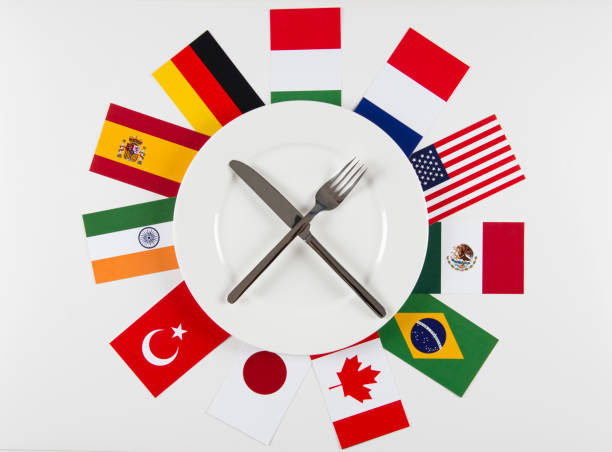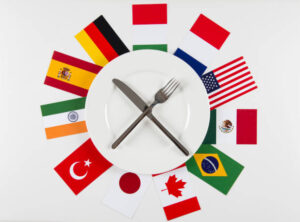Cooking on a budget doesn’t mean sacrificing flavor. With smart planning and basic techniques, affordable ingredients can be transformed into mouthwatering dishes that satisfy both your hunger and wallet.
By focusing on seasonal produce, pantry staples, and versatile ingredients, it becomes easy to build meals that taste great and cost less. Creativity in the kitchen is often born from constraints.
Planning ahead helps avoid last-minute spending. With a thoughtful grocery list and a few core recipes, you’ll reduce waste and stretch your dollars without sacrificing meal enjoyment.
Home-cooked meals offer more than savings—they allow customization, control over ingredients, and the pleasure of crafting something delicious with love and care.
2. Pantry Staples: Your Budget Allies
A well-stocked pantry is a budget cook’s best friend. Items like rice, pasta, canned beans, lentils, and spices form the backbone of countless affordable and flavorful meals.
Buying in bulk saves money in the long run. Large bags of dried goods and multipack canned items often cost less per unit than smaller versions. They also last longer.
Using pantry ingredients creatively helps make meals exciting. Add spices to plain beans, make fried rice with leftovers, or whip up a quick pasta with garlic, oil, and herbs.
Don’t underestimate canned tomatoes or tuna. These humble items can become pasta sauces, soups, or sandwich fillings—bringing full flavor for just a few dollars per serving.
3. Embrace Meatless Meals
Plant-based meals can significantly reduce food costs. Beans, lentils, tofu, and vegetables provide plenty of nutrition and flavor without the price tag of meat or seafood.
Try a chickpea curry, black bean tacos, or a lentil stew. These are hearty, satisfying meals that cost a fraction of their meaty counterparts—and still deliver bold taste.
Cooking with meat alternatives can be fun and tasty. Marinated tofu, smoky eggplant, and hearty mushrooms make excellent replacements in stir-fries, tacos, and burgers.
Reducing meat doesn’t mean losing flavor. Use strong seasonings, umami-rich sauces, and fresh herbs to keep vegetarian dishes exciting and crave-worthy on a tight budget.
4. One-Pot Wonders Save Time and Money
One-pot meals are both economical and convenient. Using fewer dishes reduces cleanup, while combining ingredients efficiently cuts down on cooking time and energy usage.
Dishes like chili, risotto, stew, or pasta primavera are rich in flavor. You can build depth using garlic, onions, spices, and simmering to let flavors meld beautifully.
Stretch one-pot meals with starches like rice, noodles, or potatoes. These ingredients are low-cost and help turn smaller portions of meat or vegetables into full dinners.
Freeze leftovers for future meals. One-pot dishes often reheat well, making them perfect for busy nights when you need a quick, affordable, and tasty solution.
5. Stir-Fries: Fast, Flexible, Flavorful
Stir-fries are a go-to for budget-friendly meals. They come together quickly, use simple ingredients, and pack in loads of flavor with just a few seasonings and sauces.
Use whatever vegetables you have on hand. Carrots, broccoli, cabbage, and bell peppers work beautifully. Frozen mixed veggies are also a great and affordable option.
A basic stir-fry sauce—soy sauce, garlic, a splash of vinegar, and a little sugar—adds that craveable savory-sweet balance to your dish, even on a tight budget.
Add tofu, a scrambled egg, or a small amount of chicken for protein. Serve over rice or noodles for a complete, satisfying meal ready in under 30 minutes.
6. Soups That Stretch Your Budget
Soups are ideal for turning modest ingredients into comforting, flavorful meals. They allow for bulk cooking and are a perfect use for leftovers or produce that needs using up.
Classic options like lentil soup, minestrone, or potato-leek soup are filling and nutritious. A few herbs and spices can enhance the flavor of even the simplest base.
Homemade broth elevates soup flavor without extra cost. Save vegetable scraps and simmer them to make your own budget-friendly, flavorful soup base.
Soups freeze well, meaning one big batch can become several meals. This makes them ideal for meal prep, busy days, and anyone looking to save money long-term.
7. Eggs: The Budget Protein Powerhouse
Eggs are one of the most affordable sources of high-quality protein. They’re incredibly versatile, making them a go-to for flavorful, budget-conscious breakfasts, lunches, and dinners.
Use eggs for frittatas, omelets, or breakfast burritos. Add vegetables, herbs, or cheese to enhance flavor. These meals are quick to prepare and easy on the wallet.
Hard-boiled eggs are great for snacks or sandwiches. Their portability and nutritional value make them a perfect low-cost addition to your weekly meal prep.
Egg fried rice, shakshuka, and egg curry are examples of global dishes where eggs shine. With just a few extra ingredients, eggs become a hearty, satisfying meal.
8. Pasta Dishes That Please Every Time
Pasta is a classic budget food with endless variety. Whether you’re using spaghetti, penne, or macaroni, it provides a comforting, customizable base for delicious, low-cost meals.
Simple sauces—tomato, pesto, garlic and olive oil—can transform plain pasta into something special. Add vegetables or a little cheese for richness and texture.
Baked pasta dishes like lasagna or macaroni and cheese feed a crowd affordably. They’re ideal for leftovers and make excellent freezer meals for future use.
Pasta salads are another money-saving option. Toss cooked pasta with beans, veggies, and a vinaigrette for a filling, flavorful meal perfect for lunches or picnics.
9. Use Leftovers Like a Pro
Don’t let leftovers go to waste. With a little creativity, last night’s dinner can become today’s lunch or tomorrow’s new dish—saving money and avoiding food waste.
Turn leftover roasted vegetables into a wrap or sandwich. Shred leftover chicken for soup or tacos. Repurposing food keeps meals exciting and budgets intact.
Create “leftover bowls” using grains, proteins, and sauces. These mix-and-match meals are fun, reduce waste, and help clear out the fridge in a delicious way.
Cooking extra portions on purpose allows for easy lunches or future dinners. Meal planning with leftovers in mind leads to big savings and smoother weeknight routines.
10. Rice: A Global Budget Hero
Rice is a global staple for a reason. It’s affordable, filling, and endlessly versatile. From fried rice to rice pudding, this grain works in savory and sweet dishes alike.
Pair rice with beans for a complete protein. This combo is a cornerstone of many cuisines worldwide and delivers big flavor on a minimal budget.
Spice up plain rice with turmeric, cumin, garlic, or coconut milk. Small additions can transform simple rice into something exciting and satisfying.
Try rice casseroles, rice soups, or stuffed peppers. Rice stretches ingredients further, giving you more servings and variety for just pennies per meal.
11. Breakfast for Dinner
Breakfast foods are often the most budget-friendly, making them perfect for dinner. Think pancakes, waffles, scrambled eggs, and breakfast burritos—all filling and affordable.
Make savory oatmeal with cheese, herbs, and a poached egg. This twist on a breakfast classic is hearty, flavorful, and wallet-friendly enough for any meal.
French toast or breakfast sandwiches also double as a satisfying evening meal. Add fruit, yogurt, or greens to balance the plate with flavor and nutrition.
Cooking breakfast for dinner is also fast and comforting. It’s a great way to use staples you already have and bring a smile to the end of your day.
12. Shop Smart, Eat Well
Budget-friendly cooking starts with smart shopping. Plan meals ahead, make a list, and stick to it to avoid impulse buys and wasted food.
Buy store brands and compare unit prices. Often, the cheaper brand tastes just as good, especially for basics like flour, sugar, or canned goods.
Take advantage of sales and markdowns. Build your weekly menu around discounted produce or proteins to get the best value for your money.
Visit farmers markets near closing time for deals. Or use apps that alert you to food close to expiry—great for scoring discounts and reducing waste.












